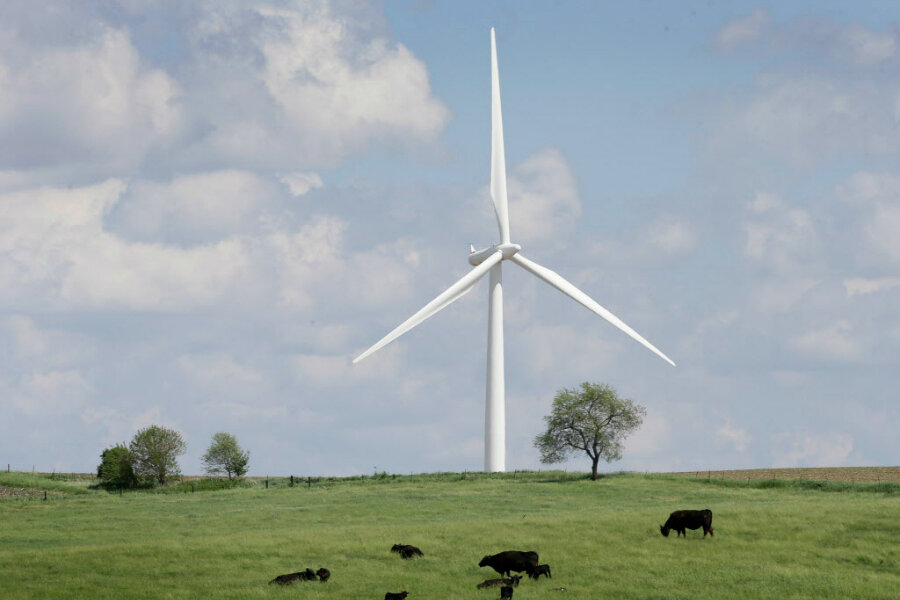Wind sweeping down the plain? Use it.
Loading...
Iowa is known as the state where the tall corn grows. But it’s fast becoming know for tall turbines, too.
Massive three-spoked wind turbines now dot the rolling rural landscape, whooshing around above fertile fields of corn and ’beans (known to the rest of us as soybeans).
Iowa farmers are now cultivating this valuable third crop to supplement their incomes: Leasing land for a single wind turbine brings in $5,000 to $10,000 per year.
The state leads the nation in the percentage of its electrical power produced by the wind, some 31 percent. It generates more than 6,000 megawatts from these turbines (enough to supply nearly 1.5 million homes), making it the nation’s No. 2 wind-generating state behind Texas.
And more is on the way. A proposed $3.6 billion project by a single private utility aims to build 1,000 more turbines that would help to pump wind energy up to 40 percent of the state’s electrical needs. A report from the American Wind Energy Association and the Wind Energy Foundation goes even further, saying that by 2030 wind could produce 100 percent of the state’s electricity and still have enough left over to supply surrounding states.
Why the tail wind behind turbines in this heartland state? Observers say the key has been to promote the obvious economic benefits of wind, which are easily embraced by politicians of both political parties, while soft-pedaling the (also very real) environmental benefits as wind power replaces fossil fuels.
“In the national perspective, [wind power and other renewable energy] has become left versus right,” says John Boorman, vice president of the Iowa Wind Energy Association, quoted in an article in Yale Environment 360, an online magazine published by Yale University’s School of Forestry & Environmental Studies. “It has never been that here [in Iowa]. It has always been about jobs and economic development.”
Yet even wind power presents environmental concerns. One of the most serious is the threat to migrating birds. In Iowa they include soaring eagles, which can be so preoccupied with looking for prey on the ground that they fail to see the whirling turbine blades ahead. Efforts are under way to ensure that turbines will not be built along their known flyways.
In some parts of the world, these 300-foot-tall wind turbines are seen as blights on pristine or scenic landscapes. That seems less of an issue here, where land traditionally is valued more for its productivity than its vistas.
Turbines also emit some noise at close range, and they take a small amount of land out of cultivation. But the environmental consequences seem small in comparison with, say, hydraulic fracturing to release underground oil and gas, which has been tied to water contamination and even earthquakes.
For agricultural land, wind may even provide a benefit. A researcher at Iowa State University in Ames is finding that the air disturbed by the rotating turbines reaches ground crops, gently stirring them and causing more sunlight and CO2 to reach the plants, which in turn stimulates faster growth.
In Iowa, where wind comes sweeping down the plain, turbines and farmers are learning how to be friends.





